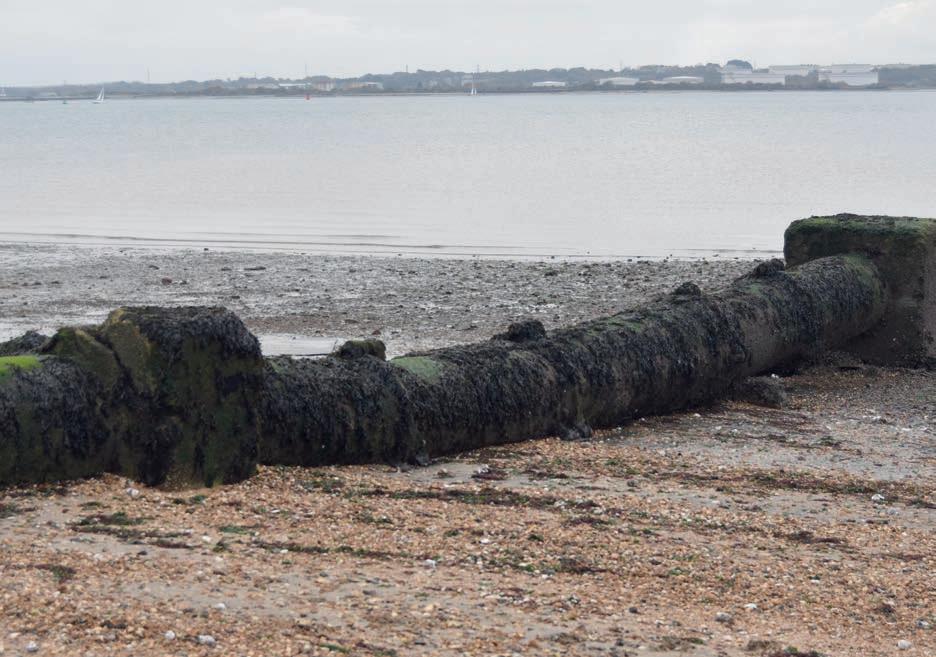
10 minute read
DIRTY WATER
Dirty Waters
When we go out in our boats how often can we honestly say that we think about what is in the water around us? Perhaps you might take a closer look next time…
Advertisement
The heavy, cast iron sewer pipes were at the mercy of wave action and settlement, at which point leakage could occur straight out on to a popular bathing beach. Image: David Henshall corrective action is taken.
Quite rightly, there has been a storm of protest and we will be following up on this story as it unfolds, for this is too important a topic to ignore. Having the waters around our coasts so polluted is a situation that must not be allowed to continue.
And yet, before we jump on to the bandwagon of popular megaphone politics, it is worth stepping back and taking a longer and harder look at where we are, as this must surely help inform us as how we can best proceed.
We often chart the growth of leisure boating back to that golden era in the 1960s, when getting afloat was the thing to do, and it is at this point that I should hold my hand up to admitting that I was already afloat myself by then. Better still, I lived in a house that backed on to the beach of Southampton Water, so in many ways I am a true ‘child of the Solent’. I grew up with the water as a back garden, and we were as likely to be in it as on it.
The good old days? However, before we set the tumbrils rolling down the streets, we need to understand that back in the ‘old days’, yes, those supposedly glorious, freewheeling golden years of the 1960s, that things were not only worse than they are today, but I would struggle to explain just how bad they really were!
For starters, this is not just a problem of today, or even one of recent times, but a situation that has roots as far back as the Middle Ages, a time when coastal trade was becoming increasingly international, which saw port areas such as Southampton and Portsmouth growing fast. Yet as the docksides and wharfs spread out, nothing had been done to deal with the massive increase in population, which saw the Solent’s double tides as little more than an ‘extended flush’ that carried the daily discharges from the cities out to sea.
Little wonder that over 500 years ago there were complaints about the state of the water around Southampton, saying that “inhabitants of this Towne, espetially those dwellings nere about the watergate, doe cast the filth of there howses into the sea which is very dangerous for destroyenge the harbor”.
A growth problem The problem then, just as it is now, is one of growth. Detailed records going back into our history show how the concentration of population into areas such as Southampton and Portsmouth had placed an incredible burden on all of the services needed, with the provision
Here at All at Sea we are proud to be able to bring you the news without getting dragged down into any of the great political debates of the day. Taking this stance is not always easy, as events in the bigger world do have an impact on our lives as boaters, be that in the issues of taking our boats abroad post Brexit, the ever-rising cost of fuel or the rights and wrongs of restrictions caused by the Covid pandemic.
However, there is a debate that is currently raging in the Press that really does impact on us as we ‘go down to the sea in ships’ for it apparently seems that for various reasons some Water companies have been allowing torrents of untreated sewage to pour into our coastal waters and inland rivers.
In some areas the situation is now serious, with the sailing hotspot of Chichester Harbour starting to look like, not to mention smell like, an open drain. I motored around a number of popular sailing locations and was disturbed to find large areas of mis-coloured and foul-smelling water that undoubtedly said ‘sewage’!
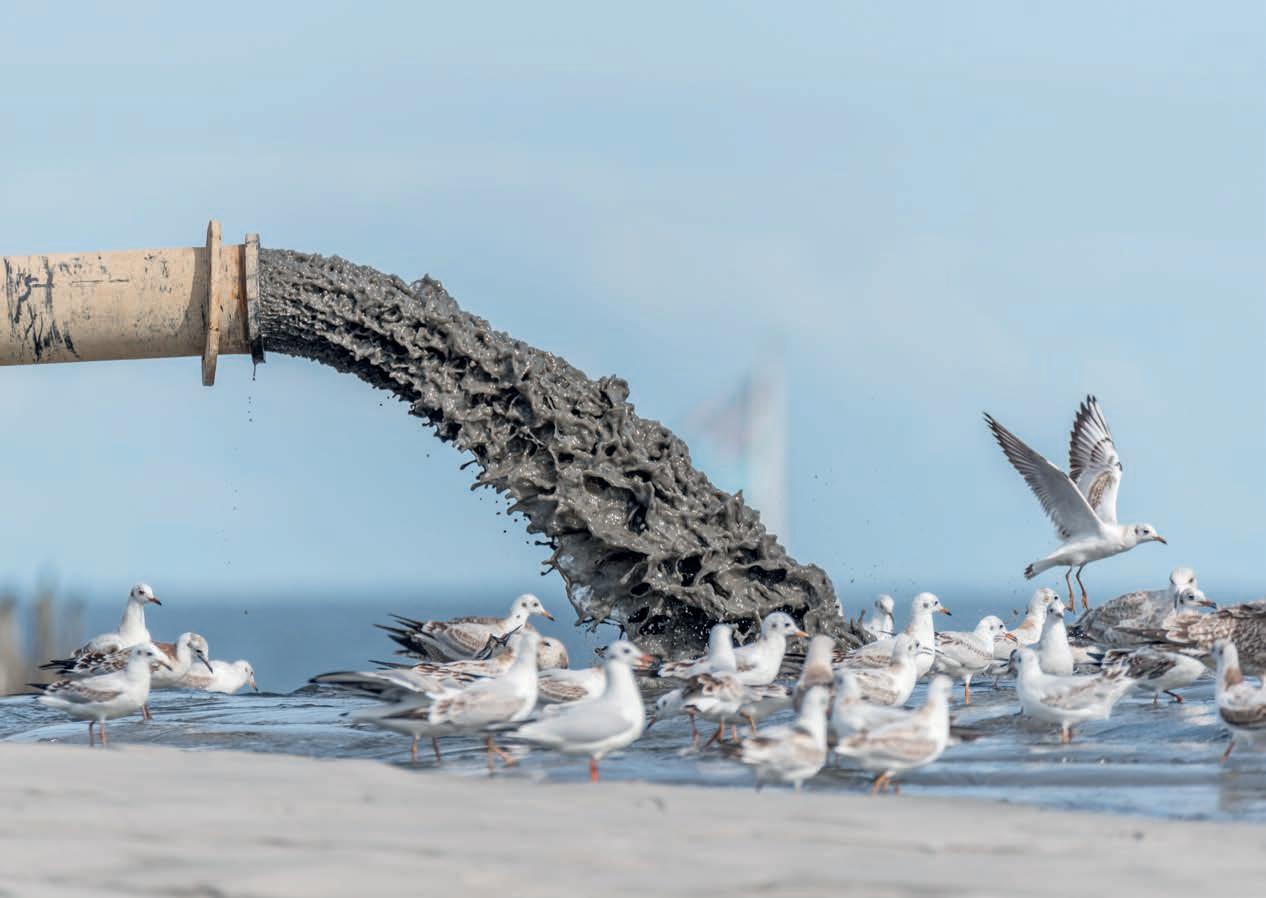
Wildlife at risk The boating community are not the only ones that use the harbour, as the whole complex of wetlands and waterways has long been renowned for the diversity and quality of the wildlife who have relied on us to share it, without destroying it. Yet, looking at the statistics, the fear now is that it is not just that the wildlife in the harbour is under threat, but that there is a real risk of it being killed off before belatedly
Even in the calm of a foggy day, the bell buoy will still ring out its warning to approaching sailors. Image: Dan Hanscom / Shutterstock
The recent headlines about massive discharges of untreated waste into the sea and inland waterways is a national scandal. In a new three part series, local sailor Dougal Henshall looks at how things were, then how they now are, before hopefully looking to a brighter, cleaner future for our seas. Image: Jon Shore/Shutterstock
Today, the SS Shieldhall offers amazing local trips around the Solent on a genuine steamship. Yet, by design, her role was much less charming, as she took tank loads of heavy sewage sludge and flushed it out into the open waters south of the Isle of Wight Image: Peter Titmuss/Shutterstock
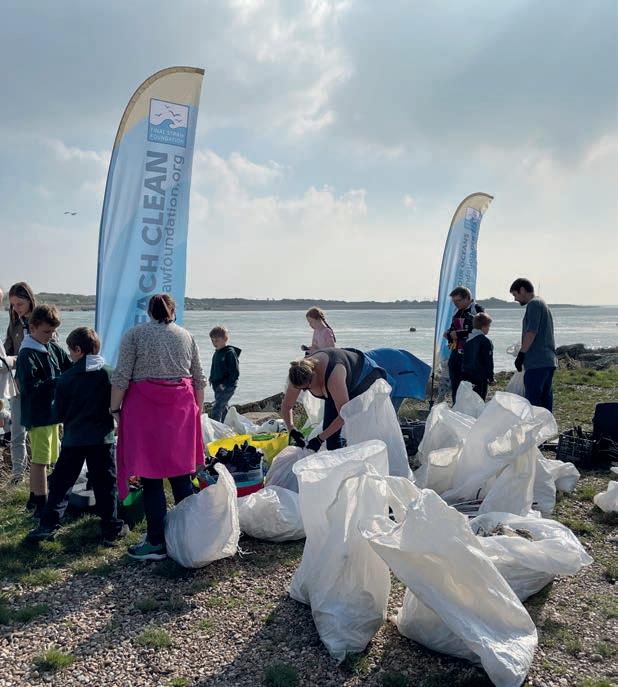
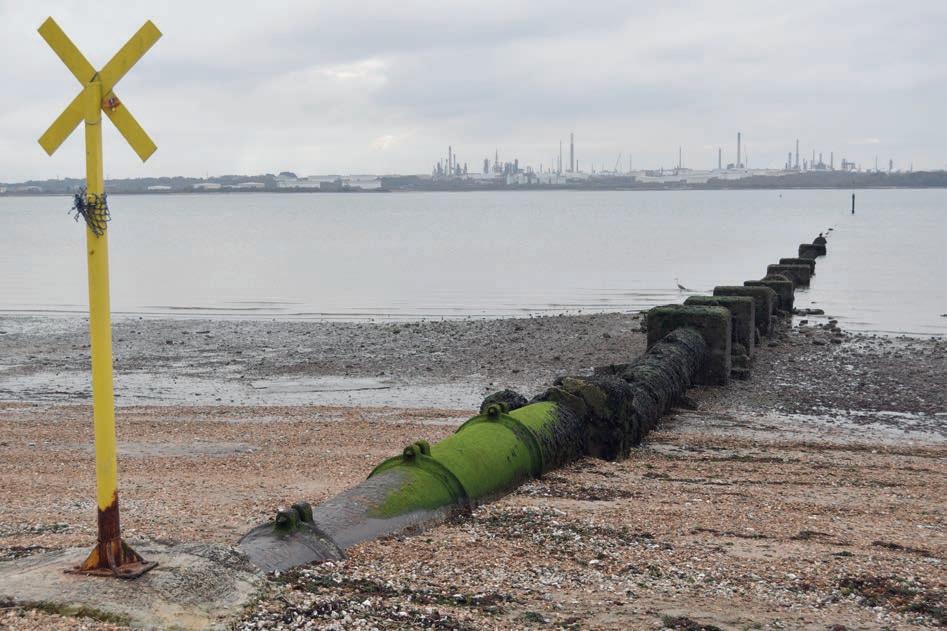
of sewage treatment being almost nonexistent until we move forward into the era of the Victorians.
Even then, rather than sewage being discharged with the storm water overflows as can happen today, the drains and sewers simply emptied straight into the sea. Everything that went down the ‘water closet’ would bubble back up, untreated in any way, into our coastal waters. There were measures put in place to minimise the impact, with the drains feeding into sewer pipes that were built out from the shoreline to reach below the point of low water springs, so in theory the successive tides would disperse the outfalls.
The pipes were supposed to be fitted with a ‘clapper’, a mechanical cup that was operated by tidal pressure, so that it only opened on the ebb. In today’s enlightened thinking, it is hard to report this as being a ‘good’ idea, but it was the best that could be done at the time.
However, the nutrient rich contents of the pipe attracted high levels of marine growth and a combination of this and poor maintenance meant that many pipes were open at all stages of the tide.
A hot day in summer, with a tide at the top of neaps, with little in the way of tidal flow, and an ugly, bubbling slick would soon form. Then, get an onshore sea-breeze and the inevitable happened, with the whole lot ending up on the beach.
Nor was it just the clappers that suffered from poor maintenance, as building extended pipes out over the inter-tidal zone, often across soft mud, was an expensive and time-consuming business. Heavy and prone to damage, either from boat strikes or from the settlement of the foundations, would see the start of ‘content leakage’ closer to the shore.
Flushing into the sea As recently as the 1950s and early 1960s, the popular sailing area of Southampton Water looked like an open drain, smelt like one and in those early days of wetsuits, you had to wash them out after use, otherwise by the following weekend they would be festering.
Times were becoming more enlightened though, and sewage treatment plants started the process of cleaning up our waters, except that there was a limit to what they could do.
This was already a quantum leap forward from the earlier efforts of simply letting the tide do the job of diluting the mess, but it was far from perfect, as the by-product of the sewage treatment was a heavy ‘sludge’. There was only one way to handle this tricky product, and that was to pipe it into specially constructed tankers, who would then sail offshore to an area of deep and open waters, where the tanks would be opened, flushing the sludge into the sea.
The justification for this approach was that this was ‘open’ water and that there was nothing there, so this was okay.
One such tanker was the Shieldhall, which was famous for being built on the Clyde with triple expansion steam engines (similar in operation to those used on the RMS Titanic). After disposing of Glasgow’s sludge for 20 years, the Shieldhall moved south to perform a similar task, taking the waste from Southampton to dump it off the back of the Island.
Now one must not make allegations, after all a valve could have stuck somewhere, but on a number of occasions, as the Shieldhall puffed her way down Southampton Water and into the Solent she left a lengthening, foul smelling slick in her wake that bubbled as it stained the water brown. Not just sewage It would be wrong though, to think that sewage was the only problem around the Solent, as in those less than environmentally aware days, there were other problems too. Major oil spills from either the Hamble or Fawley terminals varied from an unpleasant surface scum that left a tide line on the hull (I have no idea what it did to the local sailors) to the more serious breaches that left the sea carpeted in a thick layer of crude oil.
This was great fun for the boys of the waterside villages, as stones thrown in made no splash, but vanished silently beneath the dark oily blanket on the surface. Even though some of these spills were 50 years ago, it is still possible to walk along the high tide line and find stones that still have a dark oily patina on them than can be scratched off with a fingernail.
Playing our part And finally, we should not forget the part that we ourselves played, as sailors out afloat. Sailing in one of the slower classes in Cowes Week was easy, in that you did not need a navigator.
One simply followed the trail of discarded Coke bottles (pre-cans!), Mars Bar wrappers, banana skins and the like. Recycling was still a way off into the future, it did not matter what it was, things were used and then ‘ditched’ overboard.
In what is still the ‘recent past’ I was Race Officer for a major Solent event that featured two races in the day. After waiting for the back markers to finish the first heat, we got the second start away, then looked in disbelief at the Start Area, which looked as if a well laden bin lorry had sunk on its way through.
No wonder the environmentalists have described the central South Coast, and the Solent in particular, as being one of the most ‘stressed’ areas around our coasts. A strange tidal pattern that floated Southampton sewage to Portsmouth and then visa versa on the ebb, regular oils spills and unchecked ‘gash’ disposal straight into the water.
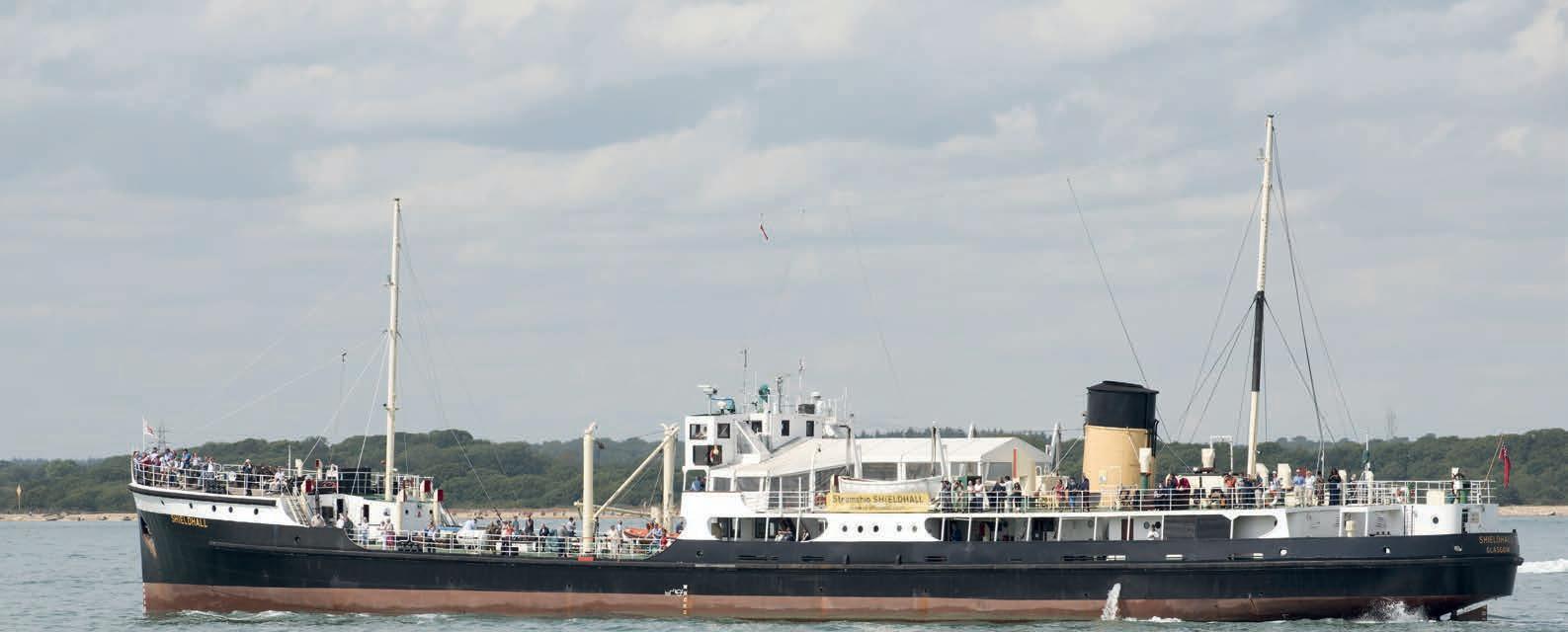
Our beaches would be in an even worse state, were it not for the incredible efforts of the next generation who work so hard during the Final Straw Foundation beach cleans. Image: Final Straw Foundation
A classic Victorian sewer pipe, that extends out to the low-water springs margin, but be in no doubt that this carried completely untreated sewage. Image: David Henshall
So, whilst things may be bad today they were worse yesterday. But next month in Part 2 we will look at how bad – or good - things are today. Then, in Part 3, we can hopefully look forward to a cleaner and brighter future – or can we?










